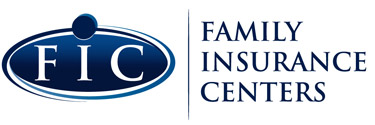3 Common Causes of Nighttime Auto Accidents
 Driving always comes with the risk of car accidents, which is why drivers are required to have some form of auto insurance to legally drive. While accidents can happen at any time, they are common at night for many reasons. If you drive at night often and want to better protect yourself, check out these three common causes of nighttime auto accidents and how best to avoid them.
Driving always comes with the risk of car accidents, which is why drivers are required to have some form of auto insurance to legally drive. While accidents can happen at any time, they are common at night for many reasons. If you drive at night often and want to better protect yourself, check out these three common causes of nighttime auto accidents and how best to avoid them.
1. Changes in Lighting
Driving at night means there is less light, which can be especially problematic on back roads with little lighting. Headlights help, but the headlights from other cars, especially high-intensity lights, can cause glare and irritate your eyes enough to make it even harder to see at night.
Another problem is that once the sun starts to set, the light around you is constantly changing until the sun has fully set. This forces your eyes to continually readjust to the changing light. This can fatigue eyes, but it also makes it harder to clearly see as your eyes continually adjust to the fading light.
You can help improve safety at night by making sure you windshields are always clean, and your own headlights are working and aligned. If someone else’s headlights cause too much glare, you can avoid this by using the right edge of the road as a guide.
2. Fatigue
Most humans follow the day-night cycle, meaning they are awake during the day and asleep at night. For this reason, you are most likely more alert during the day and become more fatigued as night falls. Naturally, one of the biggest risks of being sleepy at the wheel is falling asleep while driving, but even if you stay awake, there are many risks.
Sleepy drivers have impaired reaction time, problems processing information quickly, decreased performance and aggressive behaviors. Other signs include frequent blinking, heavy eyelids, and daydreaming, swerving and missing traffic signs.
One of the best ways to stop night-time fatigue is to make sure you get plenty of sleep, and if you are on a longer trip, make sure to take breaks or bring someone who can take over driving when you need to sleep.
3. Rush Hour
When you combine darkness and rush hour (such as during the winter with shortened daylight hours or other special circumstances), however, you get a dangerous combination. Not only do you have to contend with the changing light, reduced visibility, and lots of oncoming headlights, but rush hour puts many people in a bad mood.
Being stuck in traffic when you just want to get home after a long day at work can lead to road rage and terrible decision making. Plus, with so many vehicles on the road, there is a higher chance of an accident, especially when the cars are all packed together.
While you may not be able to avoid rush hour completely, you may want to consider public transportation. Another option is to try and find ways to stay calm during rush hour, so you don’t cause an accident. When it comes to other vehicles, however, your best bet is to stay alert.
If you drive at night, or you simply want to better protect yourself for future nighttime driving, you need to fully understand the risks associated with driving in the dark. Even before the sun fully sets, the changing light can cause irritation and increases accidents.
If you would like to know more about auto accidents and how to prevent them, or if you want to request a quote on car insurance for you and your family, contact us at Family Insurance Centers today.
